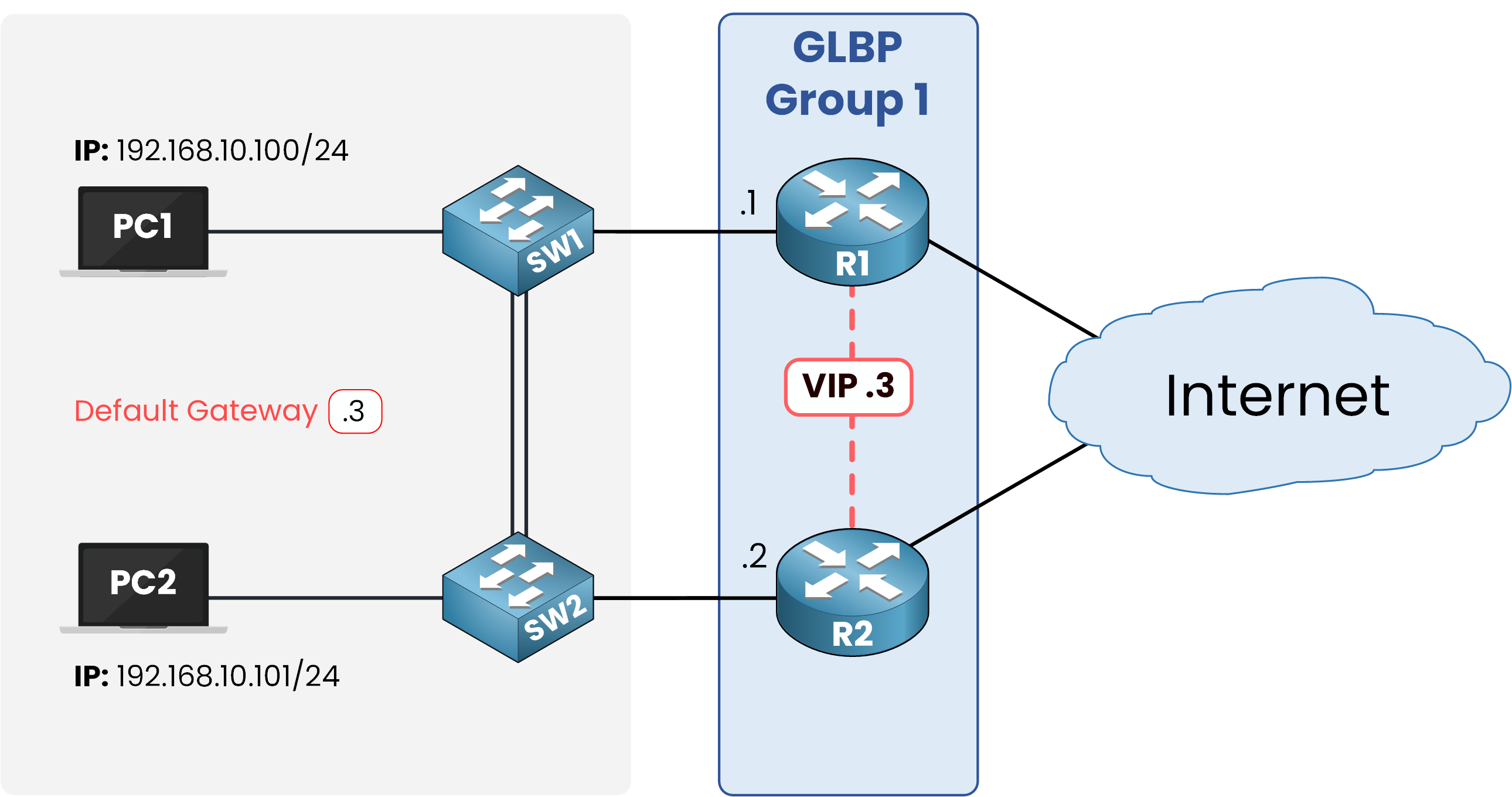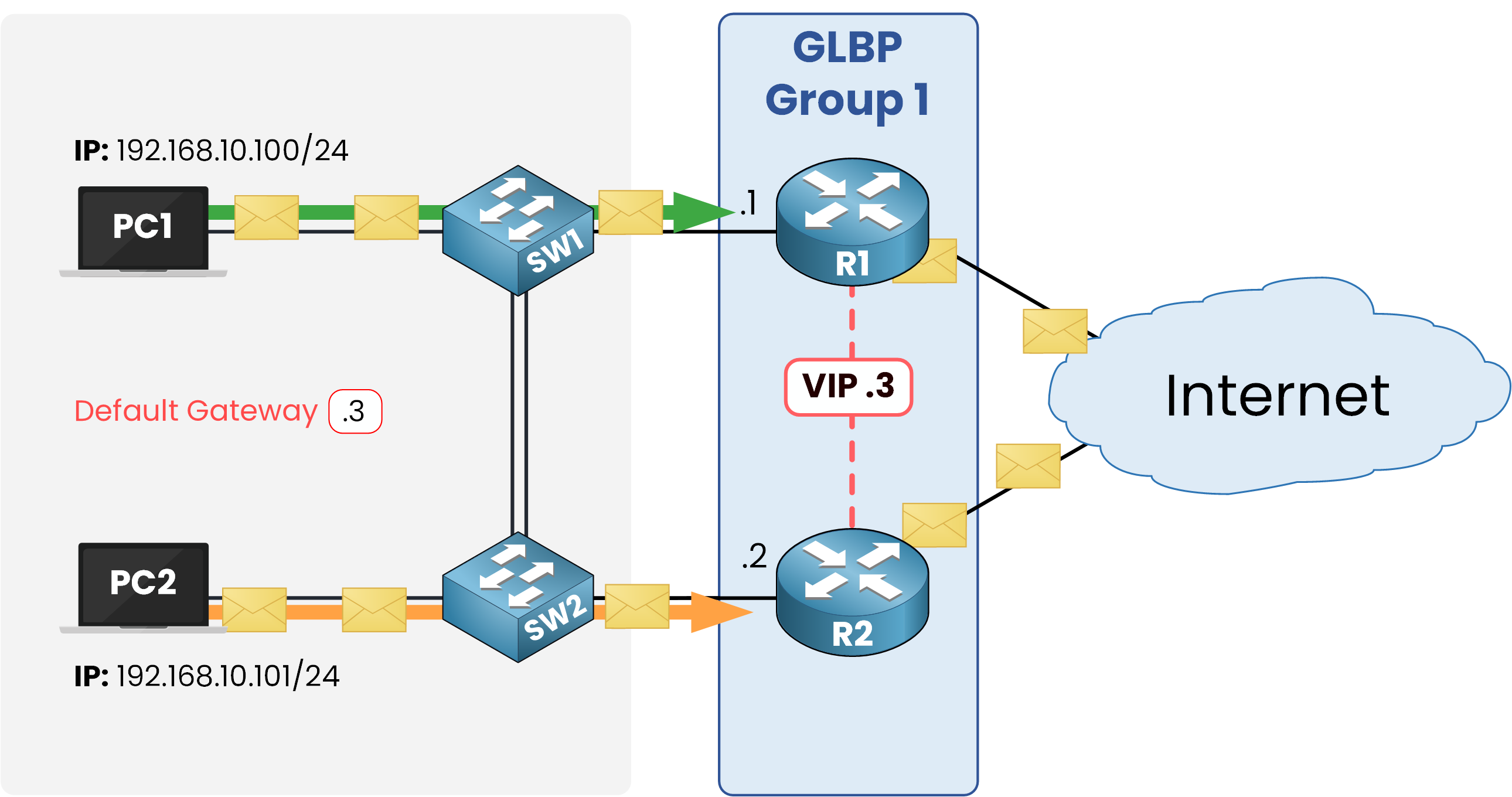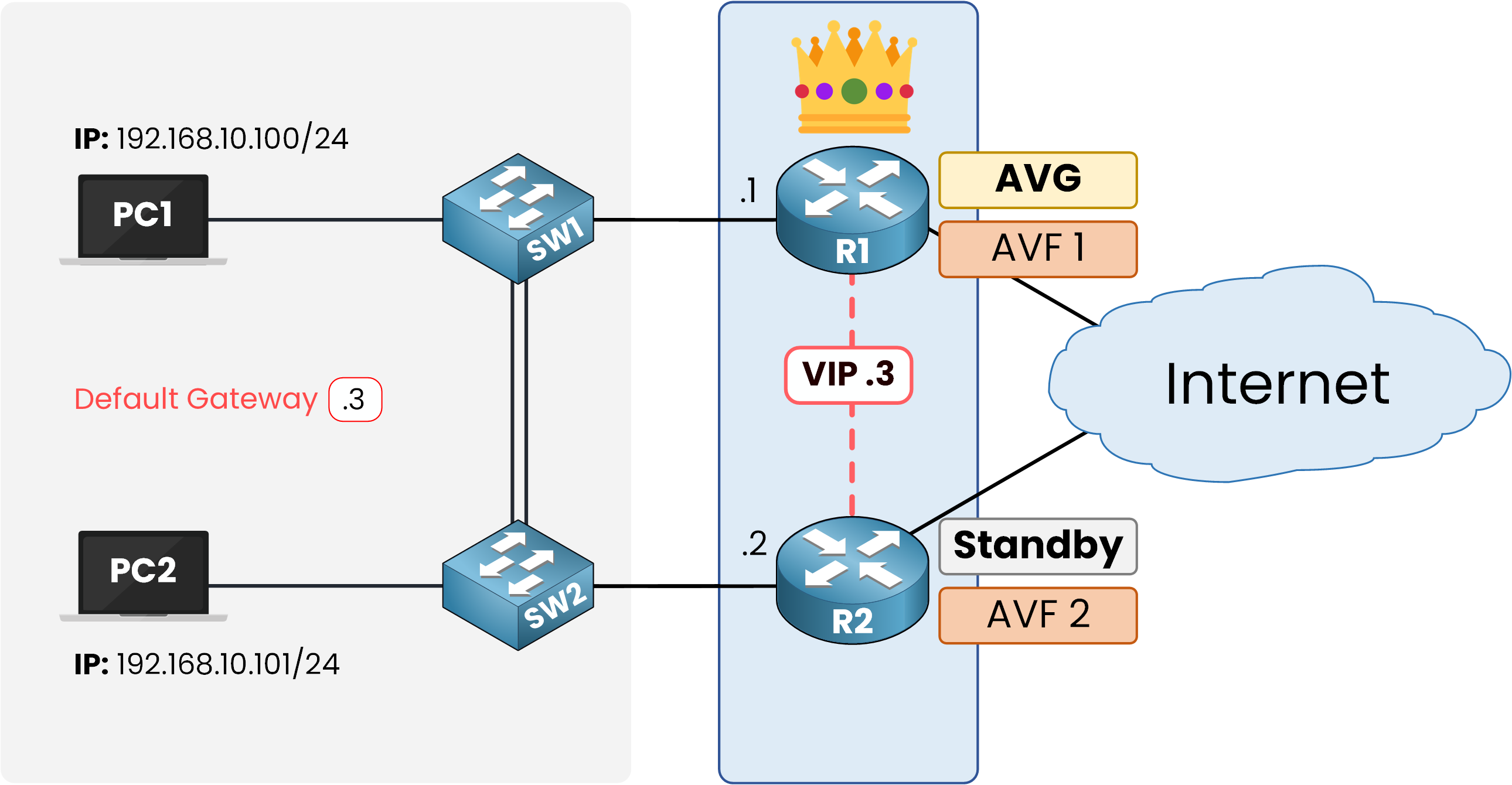In a LAN, every device depends on a default gateway router to reach external networks. If this router fails, all hosts lose connectivity to the outside world.
To prevent this, Cisco developed First Hop Redundancy Protocols (FHRPs) such as HSRP, VRRP, and GLBP. These protocols allow multiple routers to share the gateway function so that end hosts always maintain access, even if one router goes down.

Figure 1 – Basic GLBP topology with a shared virtual IP (.3).
What makes GLBP different is that it not only provides redundancy but also shares traffic between routers. Instead of having one active router and another sitting idle, GLBP allows all routers in the group to actively forward packets.
Hosts can use different routers at the same time. This boosts efficiency and helps avoid wasting network resources.

Figure 2 – GLBP load sharing: PC1 via R1, PC2 via R2.
GLBP works with GLBP groups, identified by a number, that share a single Virtual IP address (VIP). This VIP is configured as the default gateway on the hosts.
Answer the question below
What IP do all routers in a GLBP group share?
To fully grasp how GLBP works in practice, it is important to first look at the roles that routers can take within a GLBP group.
There are two main roles:
Active Virtual Gateway (AVG):
The AVG is the router that controls the group. It decides which routers will forward traffic as AVFs and ensures that hosts can always reach the virtual gateway. By default, the AVG also acts as a forwarder.Active Virtual Forwarder (AVF):
AVFs are the routers that forward traffic on behalf of the group.
Now let’s look at the diagram to connect these roles to the actual routers.

Figure 3 – GLBP roles: R1 as AVG/AVF1, R2 as Standby AVG/AVF2.
R1 is the Active Virtual Gateway (AVG).
It controls the GLBP group and decides how traffic will be distributed. Since the AVG also works as a forwarder by default, R1 is both the AVG and Active Virtual Forwarder 1 (AVF1).R2 is the Standby AVG.
If R1 fails, R2 will take over the AVG role. For now, it also works as Active Virtual Forwarder 2 (AVF2), so it forwards traffic at the same time.
The key point is that GLBP separates the gateway management role (AVG / Standby AVG) from the forwarding role (AVF). This is why both R1 and R2 can forward traffic, while only one of them manages the group.
Remember that the AVG doesn’t only coordinate the group. By default, it also forwards traffic like an AVF. This double role makes it central to GLBP’s operation. In the next section, we’ll see how the AVG assigns Virtual MAC addresses to make load sharing possible.
Answer the question below
What role acts as the leader and coordinator in a GLBP group?
To enable load sharing, the Active Virtual Gateway (AVG) assigns a virtual MAC address (VMAC) to each router in the group, including itself.
In our example, R1 (the AVG) keeps VMAC1, and R2 receives VMAC2. Each AVF has its own virtual MAC address.
40 % Complete: you’re making great progress
Unlock the rest of this lesson
If you’d like to continue your CCNA journey, simply create your free account.
Access all CCNA lessons
Practice with hands-on labs
Train with Practice exams and Quizzes
Progress tracking in your dashboard
Made by network engineers - CCNP certified
learners globally
Gateway Load Balancing Protocol (GLBP)
Gateway Load Balancing Protocol (GLBP) is the last FHRP you need for the CCNA. If you’re new to First Hop Redundancy, start with the FHRP lesson first. Here, you’ll learn how GLBP works, ensures redundancy, balances traffic, and differs from HSRP and VRRP.